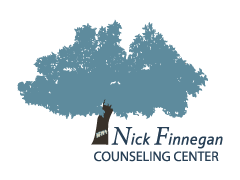Anxiety During COVID-19
Anxiety is often used to describe a feeling of worry or unease. It is an unhealthy adaptation of our fight, flight, freeze response that causes us to get stuck. During a situation with a lot of unknown and circulating fears, anxiety is normal, but sometimes it can get stuck and leave us in a prolonged state of heightened fear. Unhealthy anxiety may show up as physical, mental, and/or emotional symptoms. This can include tightness in our chest, shortness of breath, racing thoughts, negative thought spirals, irritability, relational disconnection, or numbing behaviors. Some current anxiety triggers that people may be experiencing in the pandemic are fearing loss of access to necessary resources, uncertainty of financial stability whether related to job loss or loss of commissions, as well as fears of letting someone down while being forced to straddle multiple roles entirely and simultaneously.
There are some lifestyle issues that can exacerbate anxiety and its symptoms. Some of these are lacking structure, sleep, connection, or exercises. It can also be over indulging in sugar, screen time, and exposure to the news. Stress may also play a role with exacerbating anxiety. While some normal stress is healthy and functional such as the stress of a deadline we are motivated to meet or to perform well in an interview or presentation, an overabundance of stress inducing pressures or existing in a constant state of stress can become unhealthy and in turn exacerbate already problematic anxiety. A sign this is occurring may be shifts in mood such as an increase in irritability or anger reactions on one hand or exhibiting exhaustion and lack of endurance for getting through the day. Children may respond differently to experiences of anxiety. They are especially prone to psychosomatic symptoms like stomach aches and headaches. They may also struggle with potty training regression, behavioral struggles around transitions, and an increase in tantrums.
Some ways we can offset or manage these experiences of disruptive and dysfunctional anxiety might be creating structure in our day, prioritizing sleep and exercise, engaging in movements and practices that regulate the body, such as mindfulness, meditation, and grounding. We may also engage in active processing tools to assist us in moving through the emotions and getting into the problem solving part of our brain. These include activities like journaling, talking with a trusted support person, or engaging in art. A specific tool that has increased in popularity and been shown to be effective with cognitive processing concerns is gratitude. Creating gratitude lists regularly can help us to move from negative cognitions towards a more positive focus.
If you or someone you know is struggling with symptoms of anxiety, it may be helpful to seek professional guidance. The sooner you catch patterns of anxiety, the easier it is to acknowledge, learn tools, and stop anxiety from continuing to overwhelm you and your life.
By Madison Bradley, MA, LPC specializes in trauma among other things, which very often intersects with anxiety. She engages in the use of techniques such as play therapy, EMDR, CBT, and narrative work.
